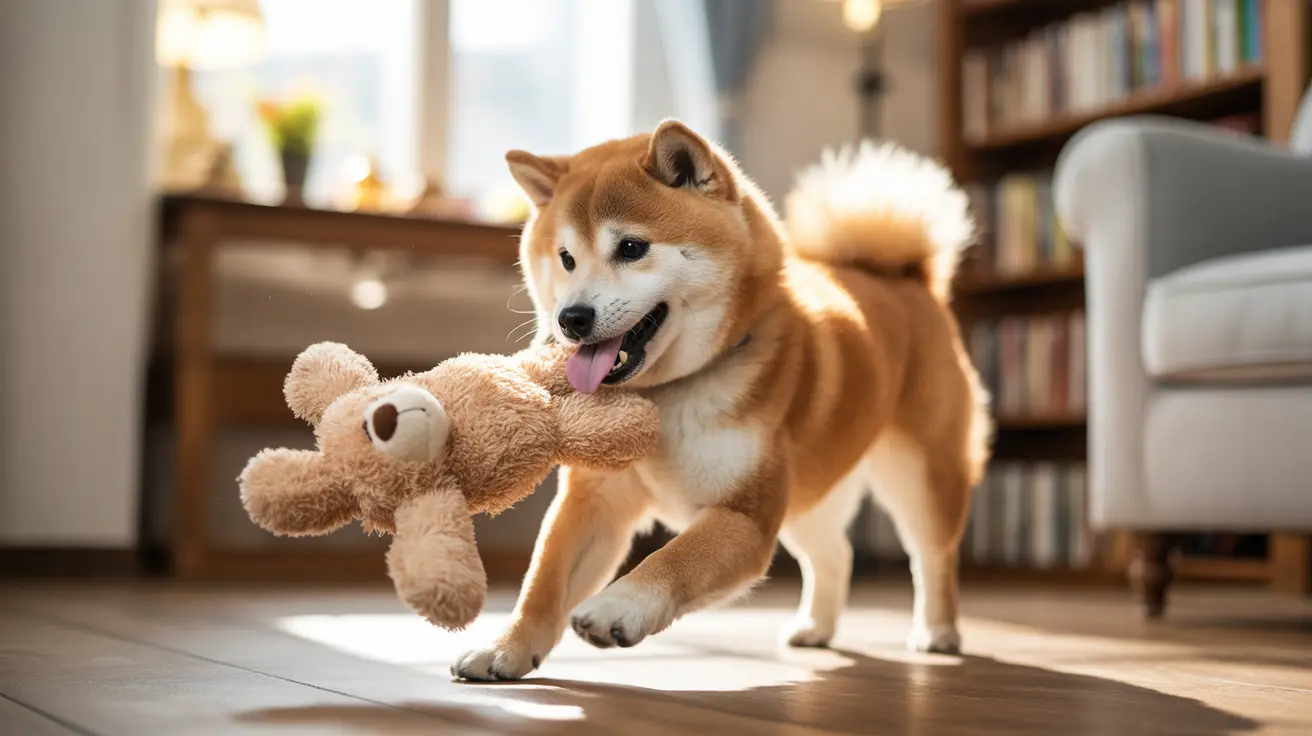If you've ever caught your dog enthusiastically mounting their favorite stuffed animal or pillow, you're not alone. This behavior, while sometimes embarrassing for pet owners, is actually quite common and normal in the canine world. Let's explore why dogs hump their toys and what this behavior really means.
Understanding the reasons behind toy humping can help pet owners respond appropriately and determine whether intervention is necessary. While many assume this behavior is purely sexual, the reality is far more complex and often relates to emotional states, social dynamics, and physical needs.
Common Reasons Behind Dog Toy Humping
Excitement and Overstimulation
Dogs often mount their toys when they're experiencing heightened excitement or overstimulation. This behavior commonly occurs after energetic play sessions, when visitors arrive, or during other exciting events. For many dogs, humping serves as a natural outlet for excess energy and excitement.
Stress Relief and Anxiety
Just as humans might fidget when anxious, dogs may turn to toy humping as a self-soothing mechanism. This behavior can help them cope with various stressors, including:
- Changes in routine or environment
- Separation anxiety
- Unfamiliar situations
- Loud noises or other anxiety triggers
Play and Social Development
Mounting behavior often begins in puppyhood as part of normal play and social development. Puppies as young as 3-6 weeks may start humping toys or littermates, and this playful behavior can continue into adulthood, especially in highly energetic or undersocialized dogs.
Managing Your Dog's Toy Humping Behavior
Positive Redirection Techniques
Rather than punishing your dog for humping, focus on redirecting their attention to more appropriate activities. Offer alternative forms of exercise and mental stimulation, such as:
- Interactive play sessions
- Training exercises
- Puzzle toys
- Regular walks and physical activity
When to Seek Professional Help
While toy humping is generally harmless, certain situations may warrant professional attention. Contact your veterinarian if you notice:
- Sudden increases in humping behavior
- Compulsive or obsessive mounting
- Signs of physical discomfort or irritation
- Aggressive behavior when interrupted
The Role of Hormones and Medical Considerations
Hormonal influences can contribute to toy humping, particularly in intact dogs or those reaching sexual maturity. However, spaying or neutering isn't guaranteed to stop the behavior, as it's often driven by non-sexual motivations. Medical issues like urinary tract infections or prostate problems can also increase mounting behavior, making it important to rule out health concerns.
Frequently Asked Questions
Why does my dog hump their toys even when they're not neutered or in heat?
Toy humping isn't always sexually motivated. Dogs may hump due to excitement, stress, or as a form of play. This behavior is common in both fixed and intact dogs, regardless of their reproductive status.
How can I stop my dog from humping their stuffed animals or pillows?
Redirect their attention to other activities, increase exercise and mental stimulation, and use positive reinforcement training. Avoid punishing the behavior, as this may increase anxiety and make the problem worse.
Is toy humping a sign of stress or anxiety in dogs?
Yes, it can be. Dogs may hump toys as a self-soothing behavior when stressed or anxious. If you notice increased humping during stressful situations, consider addressing the underlying anxiety triggers.
Can humping toys be a form of play or excitement for my dog?
Absolutely. Many dogs hump toys during or after play sessions as a way to release excess energy or excitement. This is particularly common in puppies and young dogs.
When should I worry that my dog's humping behavior might be due to a medical issue?
Consult a veterinarian if you notice sudden changes in humping frequency, signs of discomfort, excessive licking of the genital area, or if the behavior becomes compulsive. These could indicate underlying medical conditions requiring attention.
Conclusion
While toy humping can be embarrassing for pet owners, understanding that it's usually a normal behavior can help reduce concern. By identifying the underlying causes and responding appropriately, you can manage this behavior effectively while ensuring your dog's physical and emotional needs are met.






